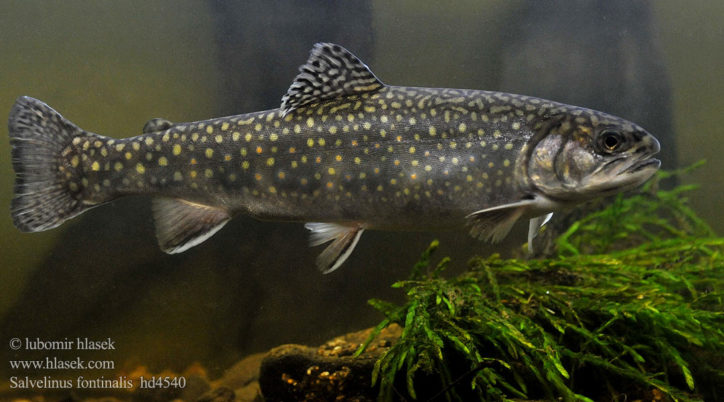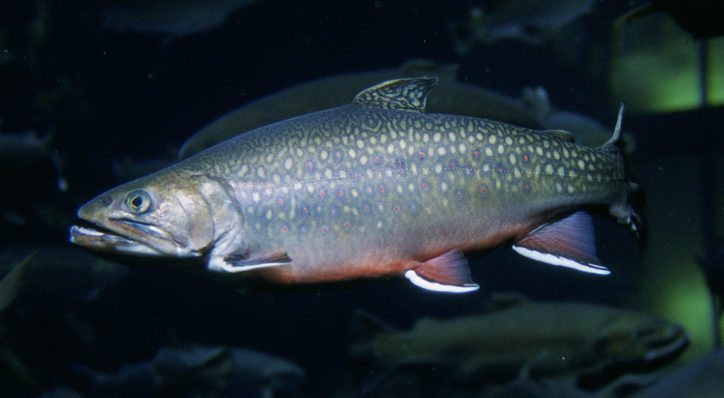Fish of the Salvelinus (char) genus of the Salmoninae subfamily of the Salmonidae family of the Salmoniformes order of the Protacanthopterygii superorder.

(Brook trout. Photo by © Lubomir Hlasek. hlasek.com)
Brook trout (Salvelinus fontinalis) was first described in 1814 by the American physician and naturalist Samuel L. Mitchill (1764 – 1831). It inhabits cool rivers and streams with oxygenated water, as well as small and medium-sized lakes. Some forms may swim downstream into the sea. The recorded maximum length is 86 cm. Specimens up to 30 cm long are more common. The maximum weight is 8 kilograms. It feeds on worms, crustaceans, insects, mollusks, fishes and amphibians.

(Brook trout. Photo © U.S. Fish and Wildlife Service. wikipedia.org)
It’s the inhabitant of the rivers and lakes of Albania, Bosnia and Herzegovina (the upper reaches of the Bosna River, etc.), Italy (water bodies of the regions of Valle d’Aosta and Lombardy, the provinces of Trento and Bolzano, etc.), Slovenia (tributaries of the Sava River, etc.), Montenegro (it was released in Lake Skadar – there are no data on its successful acclimatization), Croatia (Plitvice Lakes, tributaries of the Neretva River). It’s an invasive species.
Names of brook trout (Salvelinus fontinalis) in other languages are as follows:
Сивен (Siven) (Bulgarian), Pataki pisztráng (Hungarian), Bronforel (Dutch), Trucha de arroyo (Spanish), Salmerino di fontana (Italian), Bachsaibling (German), Pstrąg źródlany (Polish), Truta-das-fontes (Portuguese), Păstrăv fântânel (Romanian), Potočna zlatovčica (Croatian, Serbian, Slovenian), Saumon de fontaine (French), Siven americký (Czech).